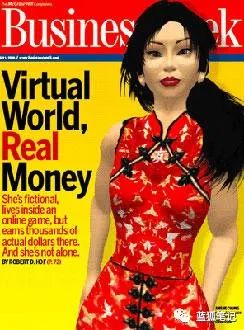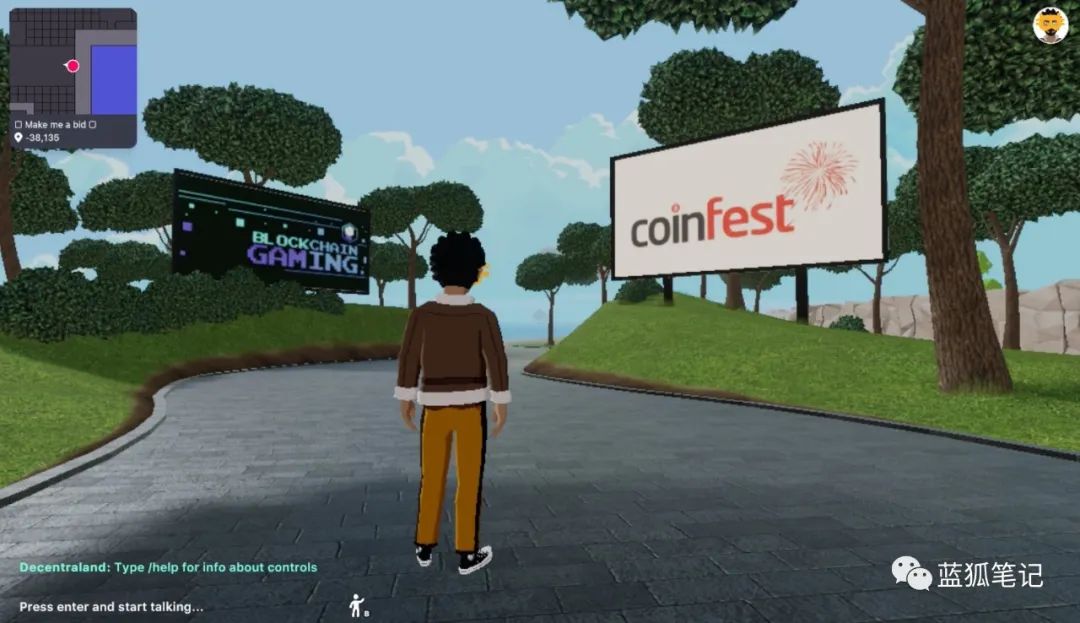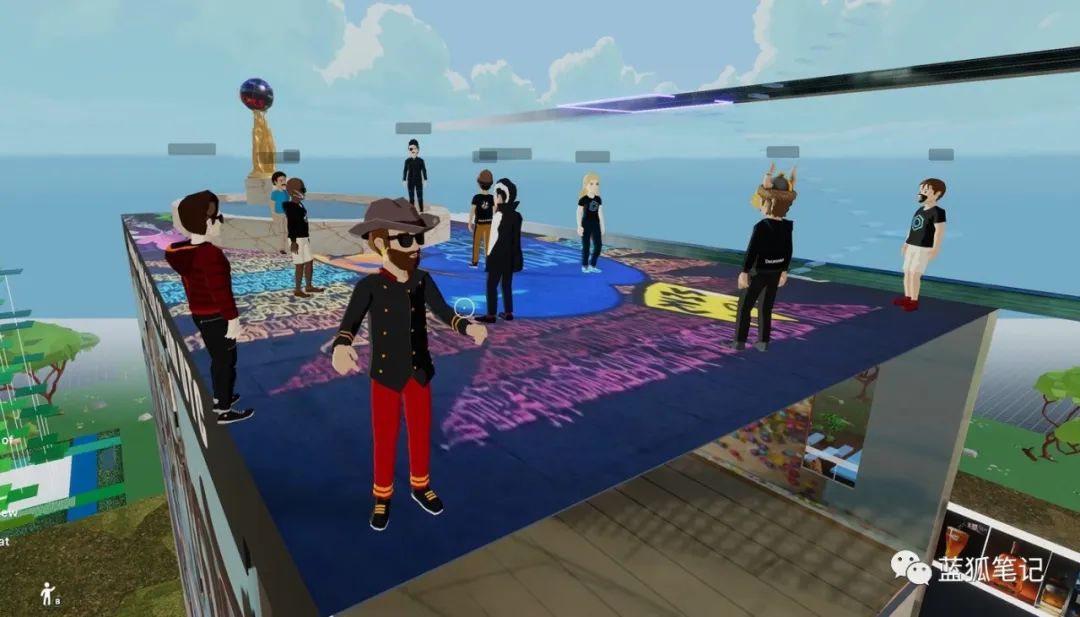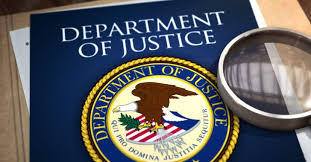Blockchain game Decentraland, Second Life and the future of the virtual world
Editor's Note: The original title was "Decentraland, Second Life and the Future of the Virtual World"
There is an online virtual world called "Second Life" that was once famous. At that time, an avatar user named "Zhong Anshe" earned more than 1 million US dollars by operating virtual real estate, which became a business. The story competing with the technology media has also appeared on the cover of the US Business Week, as one of the important signs that the world has entered a new era.

Seventeen years later, "Second Life" is still alive. It can be seen that there are more than 6000 events to be held, and many users are still active every day. But "Second Life" has not become a popular application, it failed to reach the scale of Instagram, Twitter and so on. There are also many posts on the Internet discussing why "Second Life" failed.
- The central bank's digital currency pilot, what is the fun of speculating coins-the four misunderstandings of the currency circle to DCEP
- Agricultural Bank of China said that digital currency will proceed in an orderly manner under the unified arrangement of the central bank
- Jianan Yunzhi's performance has increased, or is missing the best time for "mining shift"
As far as the current status quo is concerned, "Second Life" cannot be regarded as a complete failure, it can only be said that it is not successful enough and not brilliant enough. Ebbe Altberg, CEO of Linden Lab, the company that runs Second Life, said in an interview in 2016 that in 2015, its users exchanged a total of 60 million US dollars, and the GDP of the entire virtual world reached 500 million US dollars.
Now, with the advent of blockchain, especially the existence of smart contract platforms, individuals with virtual assets can truly be owned. So, in the era of blockchain, is there a chance for the virtual world to achieve a breakthrough and reach a new height that “Second Life” cannot reach?
What are the underlying changes that will drive this possibility? It may not be displayed in a short period of time. It takes a long time to build a virtual world. It needs content, activities, and popularity. After all, Rome was not built in a day.
But as time goes on, these underlying changes may have a strong driving force to promote it to a larger scale of success, and even surpass "Second Life" and become a real virtual world.
Ownership changes in the virtual world
Although the avatars, costumes, lands, shops, museums, castles, etc. in "Second Life" seem to be owned by users, in essence, users cannot really own them. As the encryption world often says, if you do n’t own the private key, you do n’t really own the asset. From a technical point of view, users of "Second Life" cannot really own their assets. Because all these assets are stored on the server of Linden Lab, the operator of "Second Life", the server may be hacked, may be shut down, or may be tampered with.
Once Linden Lab ceases to function, all the assets that users have thought about building will no longer exist. The ownership of assets in its virtual world is not really owned by users.
Decentraland is a virtual world built on Ethereum. The assets on it are completely owned by users, and the Decentraland development team cannot control the avatars, dresses, parcels, shops, conference centers, art galleries, etc. of these users. Real private ownership is realized here. Even if the Decentraland team ceases operations, these assets are owned by users, and it is even possible to use these assets in the new virtual world.
From the user's perspective, the significance of these changes may not be felt for a short period of time, but once something happens, the user will have pain. Ethereum founder Vitalik loved playing World of Warcraft games as a teenager. However, in a version update of the game company, it is said that the killing skill of the "Warlock" character that V God likes was canceled. After getting in touch with the official, it could not be recovered. Perhaps it is this experience that has driven V God to create an unstoppable blockchain platform without permission.
If the virtual world is a parallel world that exists for a long time, it not only has the user's assets, but also precipitates the user's time, experience, etc. All of these need to have an unstoppable technical foundation to make it surpass the game itself, let it become The long-term existence has become a part that users really have. Such a virtual world will give people the motivation to make long-term efforts to build and retain.
Changes in the economic system of the virtual world
One thing that many users of "Second Life" are disappointed with is their economic system. In the virtual economic system of "Second Life", there are also market transactions. It also has its own virtual token Linden Dollars. Lindencoin is officially issued. It is not based on blockchain. It has no fixed upper limit. Similar to today's credit economy system, its currency issuance is adjustable and is essentially an inflation system.
In the beginning, if users want to get Linden coins, the main way to get them is through their official trading network LindeX with cash (such as US dollars) for exchange. The value of linden coins is related to the total amount of linden coins issued by linden laboratory, the circulation, the supply and demand of linden coins in the market, and market manipulation. According to the data on April 12, 2020, 259 Linden can be purchased for 1 USD, but it is floating. The total transaction volume on April 12 was 66,520,903 Linden. At the above exchange rate, there was a transaction size of approximately US $ 256,837. The current transaction size of Decentraland is about one-tenth of "Second Life", but it should be noted that "Second Life" has been launched for 17 years, and Decentraland was only launched at the beginning of this year, and the content is not yet perfect. From a growth perspective, Decentraland's economies are likely to exceed the size of Second Life, but this will take time.
Users can buy land on "Second Life" using Linden Coin. With the land, they can build houses and do business, or buy from other people. In "Second Life", companies can conduct brand marketing, such as Kraft's virtual supermarket, and some companies use it to hold virtual meetings. Linden Lab can earn the cost of selling land and can also capture transaction costs.
In addition to the purchase of Linden coins, it can also be obtained by providing services for other users, such as selling virtual hats, shoes, diamonds, etc. As of writing, there are 5,983,146 items sold on "Second Life", most of which are under $ 5. For example, the appearance of the avatar.
In a word, in the economy of "Second Life", it is a centralized market economy. Linden Lab is the manager of the entire economic system. It has the power to issue currency to the entire system and the ability to withdraw currency from circulation. It retains the account book of transactions between users, and can even change the mechanism of the game. This happened in 2017, and "Second Life" was subject to regulatory investigations on spinach issues, which led to the cancellation of the spinach business.
In addition, like all credit economy systems, inflation or deflation may occur. If there is inflation in "Second Life", users may convert their Linden dollars into US dollars, which will lead to insufficient reserves of US dollars and the problem that they cannot be exchanged.
In the virtual world based on blockchain, the issuance of currency is clear and cannot be tampered with, which leads to the situation that its economic system will not be similar to inflation and non-convertibility.
Decentraland ’s virtual world token is MANA. Like many projects in the crypto world, it has a fixed supply. There are 2,644,403,343 tokens in total. All tokens are recorded on the Ethereum ledger. No one can tamper with it. The same is true of the founding team of Decentraland. In "Second Life", Linden Lab actually controlled the operation of its entire economic system, including the additional issuance of Linden Coin.
MANA tokens have a fixed circulation. This results in the growth of the value of its economy can be accumulated on the MANA token. This is fundamentally different from the "Second Life" company's mode of issuing tokens.
Changes in the governance system of the virtual world
Linden Lab has created a lot of space for users of "Second Life", but in essence, its governance is still centralized. The decision is not made by community governance, and there is no real governance mechanism to ensure users' real control of the virtual world.
The current core products of decentraland include Builder, SDK, Marketplace and World. Decentraland released its virtual world on February 20, 2020. All infrastructure is operated by distributed network nodes. Its governance system is gradually moving towards a decentralized model. It established the Decentraland DAO and Decentraland Foundation.
- Decentraland DAO
Decentraland DAO is an on-chain organization that will be responsible for controlling core smart contracts and protocol upgrades in the future. Holders of MANA tokens can vote through DAO to approve any changes to smart contracts. In addition, Decentraland DAO owns key assets, including public roads and plazas in Decentraland. DAO is also a beneficiary of the exercise contract. This contract plans to release 222 million MANA tokens in the next ten years.
The ultimate goal of Decentraland DAO is to become a tool for collective decision making, especially when it comes to economically relevant parameters. The MANA contract became non-tamperable in November 2018, but there are adjustable parameters for LAND, Esates, dress up, market, and other smart contracts, and the community can update it from time to time. For example, do market transaction fees need to be changed? Are MANA holders rewarded for participating in governance and maintaining the network? Problems such as these cannot be determined by a single body of the founding team. Decentraland was initially resolved through opinion polls, but this is not binding. From a governance perspective, these issues need to be resolved through DAO.
- Decentraland Foundation
The main work of the Decentraland Foundation is to supervise the content team and to deal with some problems that DAO cannot solve. The Decentraland Foundation is an independent entity, independent of the founding team of Decentraland. The Decentraland Foundation holds Decentraland intellectual property rights, trademarks, web domain names, open source code bases, social media accounts, and all other assets that DAO cannot own due to lack of legal support.
Through the foundation and DAO, Decentraland can cooperate with each other and operate in a decentralized manner instead of being controlled and operated by the founding team, including marketing, community management, and product routes. The decentralized governance model also has a transitional process. In this process, the development team provides advice on strategic and tactical matters, and shares the relevant views of the project progress with the MANA and LAND holders.
In addition, in order to inspire more people to participate in the creation of the virtual world, Decentraland also has a "creator plan". Creators will receive long-term MANA funding. There are also some teams that have received private investment and some are already building full-time on Decentraland. A dedicated content team is responsible for evaluating whether the project can be part of the "Creator Program". Creators need to report their progress to the community once every two months. Qualified teams submit proposals for the plan through DAO, which allows the community to vote and get approved.
The new era of the virtual world
Finally, this is an opportunity for both "Second Life" and Decentraland. Now the virtual world highlights more value.
- Non-realistic scene value
Due to the influence of COVID-19, many activities are realized through unrealistic contacts. In this case, the value of the virtual world is reflected. For example, on Decentraland, people can hold conferences in the crypto world. Many conferences have been cancelled under current circumstances, such as Apple's WWDC. However, conferences in the crypto world, such as Coinfest, have not been cancelled, but it has moved from offline to online. It will be held in the virtual world on Decentraland from March 30 to April 4.

There are even users holding birthday parties on Decentralad.

At present, various events have been released on Decentraland from April to June, including Art World Congress, Fashion Show, Club Party, Gallery Opening, Crypto World Cup, etc.
In addition to entertainment, education and business interaction in the virtual world are also opportunities. In "Second Life", there are already scenes of educational interaction. The same applies to Decentraland. The usual business and educational scenes generally happen offline, and everyone gathers to discuss and learn. In today's current situation, the virtual world can help people to conduct virtual business interaction and learning education. In Decentraland, real-time video streaming, presentations, private chat channels, shared whiteboard collaboration, etc. can be added in the future. On Decentraland and "Second Life", offline commercial organizations can open their own online stores, and users can communicate with the owner in the virtual world to view products, including videos and conversations. This experience is more like shopping in a supermarket on the street, with a more intuitive feeling.
- Speculation or investment value of the virtual world
At present, the NFT price of the virtual world is very high. For example, people buy land in the virtual world, either for speculation and expecting to sell at a high price; or constructing on the land, establishing shops, museums, venues, etc., can also add value. Once it becomes a gathering place for people, such as a intensive place for various events, such a place will have extremely high added value.
In its third land sale, Sandbox sold 12.384 plots in one day and received a total of 3,400 ETH. At the current ETH exchange rate, it was about $ 500,000. According to Opensea data, the average price of Decentraland NFT can reach more than 5ETH.
- The attractiveness of the virtual world to the younger generation and the acceleration of VR adoption
Since the 1990s, it is basically the original generation of the Internet. They have been exposed to the Internet since childhood, and as the Internet grew up, they did not have any strangeness to video games, social media, and online shopping. This also includes virtual assets, which are natural to them.
For the virtual world, the younger generation has no barriers to adoption. However, the current user experience of Decentrand is still very elementary. Although it continues to improve, it is still far from a good user experience.
In addition, the adoption of VR will also greatly help the improvement of user experience. In 2019, 5.7 million VR devices were sold. This order of magnitude shows that users of a certain size are already playing VR. As prices fall and content increases, it can be expected that future adoption will accelerate. If Dencentraland also realizes the virtual reality experience in the future, it will be interesting to conduct various interactions such as conferences, games, and education on it.
Compared with the current online experience, virtual reality is more in line with people's real experience. With VR, it is more intuitive and better. It can integrate text, audio and video into the virtual world. Setting permissions in the virtual world and performing various interactions can achieve a great user experience.
Conclusion
If "Second Life" is a virtual world 1.0, then the virtual world based on blockchain technology of Decentraland can be said to be 2.0. What "Second Life" can do now, Decentraland can do in the future. However, what Decentraland can do, "Second Life" has no way to do it. Because the underlying logic is different.
From today's perspective, Decentraland's user experience is still very elementary and primitive. However, with the development of Decentraland, the virtual world based on blockchain will show more and more advantages.
——
Risk warning: All articles in Blue Fox Notes can not be used as investment advice or recommendation. Investment is risky. Investment should consider personal risk tolerance. It is recommended to conduct an in-depth investigation of the project and carefully make your own investment decisions.
We will continue to update Blocking; if you have any questions or suggestions, please contact us!
Was this article helpful?
93 out of 132 found this helpful
Related articles
- Onion model of blockchain security: additional security is added at each layer
- A picture of the central bank's digital currency DCEP "Past Life and Life"
- Financial decentralization: Can DeFi replace traditional finance?
- See how this 80-year-old coffee brand has fun with blockchain
- Popular Science | Use the overlay to change the format of the Ethereum state tree
- One article to understand the latest research and development progress of Ethereum, zero knowledge proof, sharding and other topics
- Topaz, the first testnet with Eth2.0 Phase 0 mainnet configuration, has been released






